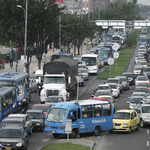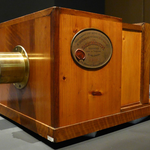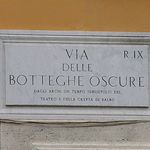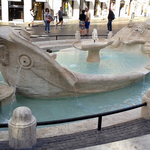Portico d'Ottavia e Ghetto
The Porticus of Octavia was constructed on the remains ofa building put up by Q. Cecilio Metello Macedonico in 146 A.C by architects Sauro and Batraco between the years 27 and 23 A.C. Augustus commissioned the construction and devoted it to his sister Octavia after whom the Portico was named. It was a double-columned porch of a rectangular form (119 meters wide and 132 meters long) adorned by sculptures and paintings. The portico made an easier access to the Marcello theatre which is situated behind it. The portico served for the theatre as the audience stroll.
The signatures of two architects still can be seen on the base of the porch who rather than put their own names made the drawings of two animals: a lizard for Sauro and a frog for Batraco.
Subsequently it was rebuilt by Settimius Severe and then by Caracalla.
The remains belong to the Severian restoration and includes the southern entry propylaea with two lines of Corinthian columns. Two columns of the right-hand porch, three of the rear file, a part of the entablature let alone the final arch are rested up to now. Other remains are visible from the part of Marcello's Theatre. From the right -side of the arch a marble slab with inscripted words in Latin say: " Give the heads of the longest fish to the conservatives up to the first fins".
The inscription refers to the ancient fish market remembered by the name of the church of Sant'Angelo in Pescheria.
Porticus of Octavia is the historical center of so-called Ghetto in Rome.
The ghetto term comes from the venetian (getto).
This name originally indicated a foundry in Venice situated in the island assigned to the Hebrews in 1516 as their residence. Since the XVI century the word became the name of the town quarter of the compulsary residence of hebrews all over Europe.
In Rome the Hebrews settled themselves in the area near the Porticus of Octavia and then they were forced to stay there.
In 1200 the pope Innocent III forced them to put a yellow letter O on the suit as distinctive sign. But it was the pope Paul IV who in 1555 made a wall with three gates to build up in the area. These gates were to be closed after the sunset: all the Hebrews mandatorily had to return inside the walls as they resided firmly only inside.
For the Hebrews it was forbidden to hold any activity or trade except rag-and-bones.
In '600 the resident Hebrews were numbered 6.000.
It was the Roman Republic which in the night of April 17 in 1848 broke down the wall.
At the beginnings of '900 the ghetto was definitively dismantled and the Hebrews were not formally separated from other citizens any more.
In 1907 Rome elected for the first time Ernesto Nathan, an Israelian mayor.
In 1939 after an alliance with the Nazi Germany the Fascism made a racist jump and on October 16th of 1943 the German soldiers having surrounded the old ghetto with the maximum Hebrew concentration raked 2091 Roman Hebrews deporting them in the concentration campus in Germany.
In the very thick building fabric making part of the Sant' Angelo district, the "islands" of the Mattei and the Cenci Bolognetti stands out. Being a part of the ghetto left-sided island lying near the Via del Portico d'Ottavia up to the Lungotevere was demolished at the beginnings of '900 for to wide up the road and give place to the current ugly buildings. Further on the left side the rear part of the synagogue or Israelite Temple is found which is a big building constructed by architects Armanni and Costa in 1904 who were inspired by assiro-babylonian motives with a dome dressed of aluminium in the pavilion. Inside the synagogue a Mostra permanente della Comunità ebraica di Roma.
In the right part of the street there are many shops which still preserve the ancient israelite spirit.
In the same street there is the house of the Manili with the façade dating to the year of its building,1468.

 The records of Rome. Big numbers, not always enviable, for a big city.
The records of Rome. Big numbers, not always enviable, for a big city. New Phot-O-Matic section. To spend some time looking at photos (also) of Rome.
New Phot-O-Matic section. To spend some time looking at photos (also) of Rome. The administrative, urban, toponymic and imaginative subdivisions of Rome.
The administrative, urban, toponymic and imaginative subdivisions of Rome. Notice for tourists: in Rome you drink for free. Historical fountains and 'big noses'.
Notice for tourists: in Rome you drink for free. Historical fountains and 'big noses'. Free museums return on the first Sunday of the month.
Free museums return on the first Sunday of the month.